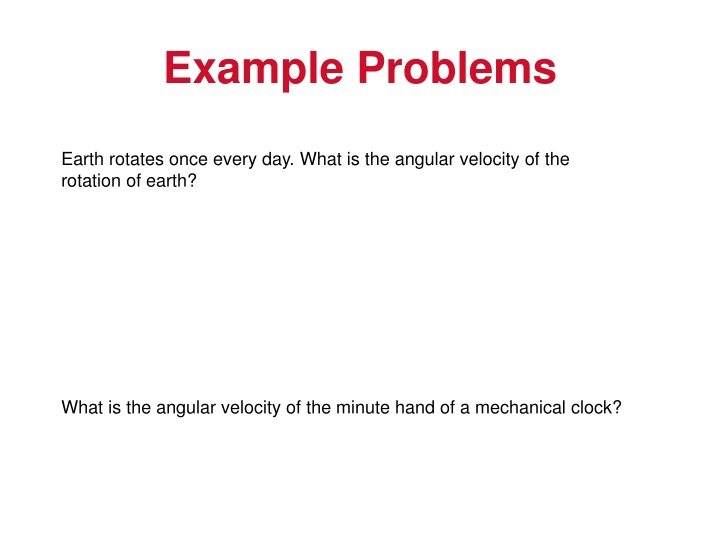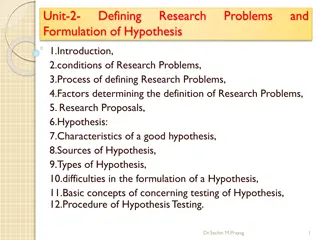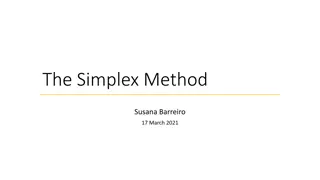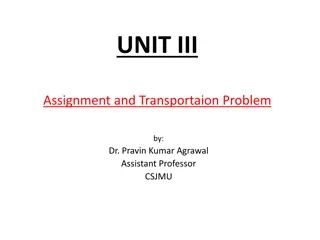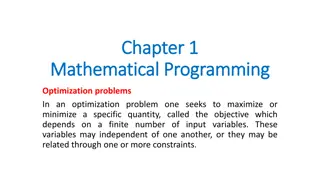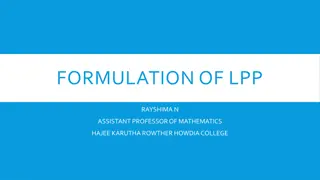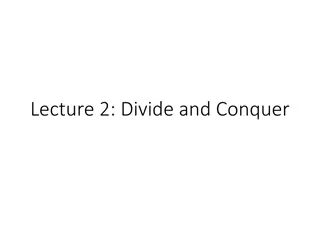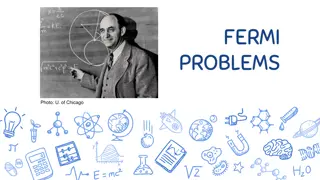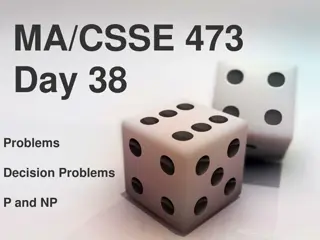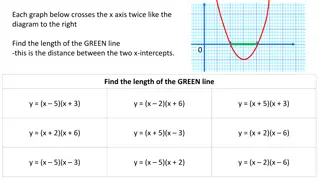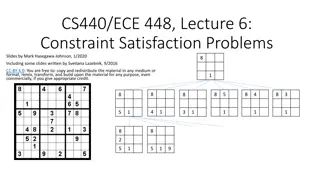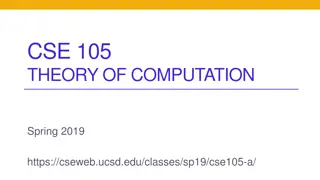Example Problems
Explore angular velocity, torque, equilibrium, kinetic energy, and angular momentum through practical examples and applications. Understand concepts like radial acceleration, rotational inertia, and conservation of angular momentum in various scenarios. Discover how to calculate torque, angular acceleration, and more in real-world situations.
Download Presentation

Please find below an Image/Link to download the presentation.
The content on the website is provided AS IS for your information and personal use only. It may not be sold, licensed, or shared on other websites without obtaining consent from the author.If you encounter any issues during the download, it is possible that the publisher has removed the file from their server.
You are allowed to download the files provided on this website for personal or commercial use, subject to the condition that they are used lawfully. All files are the property of their respective owners.
The content on the website is provided AS IS for your information and personal use only. It may not be sold, licensed, or shared on other websites without obtaining consent from the author.
E N D
Presentation Transcript
Example Problems Earth rotates once every day. What is the angular velocity of the rotation of earth? What is the angular velocity of the minute hand of a mechanical clock?
Torque, Torque depends on the applied force and lever-arm. Torque = Force x lever-arm Torque is a vector. It comes in clockwise and counter- clock wise directions. Unit of torque = N m P: A force of 40 N is applied at the end of a wrench handle of length 20 cm in a direction perpendicular to the handle as shown above. What is the torque applied to the nut?
Application of Torque: Weighing P. A child of mass 20 kg is located 2.5 m from the fulcrum or pivot point of a seesaw. Where must a child of mass 30 kg sit on the seesaw in order to provide balance?
Equations Sheet MOTION Linear t d; (d = r ) v = d/t; (v = r ) = /t a = v/t; (a = r ) v = v0 + at v2 = v02 + 2ad d = v0t + at2 d = (v + v0)t force = F Mass =m Rotational t Time interval Displacement Velocity Acceleration = /t = 0+ t 2= 02+ 2 = 0t + t2 = ( + 0)t torque = Rotational inertia = I = miri2 net= I L= I Ii i= If f Kinematic equations To create Inertia Newton s 2nd Law Momentum Conservation of momentum Fnet = ma p = m V mivi = mfvf Kinetic Energy Translational Kinetic Energy = TKE = mv2 W=F d Rotational Kinetic Energy = RKE = I 2 W= Work
8. During a very quick stop, a car decelerates at (a) What is the angular acceleration of its 0.280-m-radius tires, assuming they do not slip on the pavement? (b) How many revolutions do the tires make before coming to rest, given their initial angular velocity is ? (c) How long does the car take to stop completely? (d) What distance does the car travel in this time? (e) What was the car s initial velocity? (f) Do the values obtained seem reasonable, considering that this stop happens very quickly? .
Conservation of Angular momentum Problem A woman stands at the center of a platform. The woman and the platform rotate with an angular speed of 5.00 rad/s. Friction is negligible. Her arms are outstretched, and she is holding a dumbbell in each hand. In this position the total moment of inertia of the rotating system (platform, woman, and dumbbells) is 5.40 kg m2. By pulling in her arms, she reduces the moment of inertia to 3.80 kg m2. Find her new angular speed.
